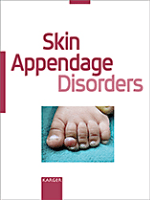
Skin Appendage Disorders
Scope & Guideline
Unveiling the Complexities of Skin Appendages
Introduction
Aims and Scopes
- Clinical Management of Hair and Nail Disorders:
The journal emphasizes research on the clinical management of various hair and nail disorders, including alopecia areata, androgenetic alopecia, onychomycosis, and nail psoriasis. It explores treatment efficacy, safety, and novel therapeutic approaches. - Dermatopathology and Diagnostic Techniques:
Research articles often delve into dermatopathological findings and diagnostic techniques such as trichoscopy and dermoscopy, which are crucial for accurate diagnosis and management of skin appendage disorders. - Impact of Systemic Conditions on Skin Appendages:
The journal includes studies that investigate the interplay between systemic conditions (e.g., diabetes, renal disease) and skin appendage disorders, highlighting how systemic health can affect hair and nail health. - Patient-Centric Research and Quality of Life:
A focus on patient-reported outcomes and quality of life in individuals with skin appendage disorders is prevalent, encompassing psychosocial factors and the impact of these disorders on patients' daily lives. - Innovative Treatments and Emerging Therapies:
The journal promotes research on innovative treatments such as the use of JAK inhibitors, platelet-rich plasma, and novel drug delivery methods, showcasing advancements in therapeutic strategies for hair and nail disorders.
Trending and Emerging
- Use of JAK Inhibitors in Treatment:
Recent publications have increasingly focused on the use of JAK inhibitors for treating conditions like alopecia areata, reflecting a growing interest in targeted therapies that address the underlying pathophysiology of hair loss. - Integration of Psychosocial Factors in Treatment:
There is a rising trend in research that integrates psychosocial factors into the management of skin appendage disorders, emphasizing the importance of mental health and quality of life in treatment outcomes. - Innovative Diagnostic Techniques:
Emerging studies are focusing on advanced diagnostic techniques such as dermoscopy and trichoscopy, which enhance diagnostic accuracy and contribute to better management strategies for hair and nail disorders. - Exploration of Hair Follicle Microbiome:
Research into the scalp microbiome and its influence on hair disorders is gaining traction, highlighting the role of microbiota in hair health and disease, and paving the way for novel therapeutic approaches. - Impact of Environmental Factors on Hair and Nail Health:
Increasing attention is being paid to how environmental factors, including pollution and lifestyle choices, affect hair and nail health, indicating a broader understanding of the influences on dermatological conditions.
Declining or Waning
- Traditional Topical Treatments for Nail Disorders:
There has been a noticeable decrease in studies focusing on traditional topical treatments for nail disorders, suggesting a shift towards systemic therapies or more advanced treatment modalities. - Focus on Rare Nail Conditions:
Research on rare nail conditions seems to be less frequent, potentially due to the challenges associated with studying these conditions and the limited clinical interest compared to more common disorders. - Historical Perspectives and Longitudinal Studies:
Fewer articles are being published that provide historical perspectives or longitudinal studies on skin appendage disorders, which may reflect a preference for contemporary clinical research and immediate applicability of findings.
Similar Journals
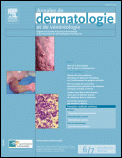
ANNALES DE DERMATOLOGIE ET DE VENEREOLOGIE
Pioneering Research in Dermatology and VenereologyANNALES DE DERMATOLOGIE ET DE VENEREOLOGIE is a distinguished journal that serves as a vital platform for disseminating innovative research and insightful reviews in the field of dermatology and venereology. Published by MASSON EDITEUR, this journal has been a cornerstone for professionals and researchers since its inception in 1977, offering a wealth of knowledge that spans decades. With its ISSN 0151-9638 and E-ISSN 2214-5451, it is indexed within leading databases, ensuring that the published work reaches a broad audience. The journal currently holds a Q3 ranking in the dermatology category, reflecting its commitment to quality and rigorous peer-review processes. While the journal is not open access, it provides an extensive archive of valuable studies that contribute to advancements in skin health and treatment methodologies. Located in Issy-les-Moulineaux, France, ANNALES DE DERMATOLOGIE ET DE VENEREOLOGIE continues to attract submissions from esteemed professionals, enhancing its reputation as a crucial resource for those dedicated to the ongoing development of dermatological sciences.
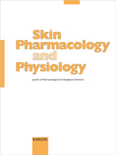
SKIN PHARMACOLOGY AND PHYSIOLOGY
Fostering Innovation in Skin Science and TherapeuticsSKIN PHARMACOLOGY AND PHYSIOLOGY is a leading peer-reviewed journal published by KARGER, based in Switzerland, that focuses on the intricate interplay between skin pharmacology and physiology. With its ISSN 1660-5527 and E-ISSN 1660-5535, the journal spans a rich history of publication since 1988, presenting groundbreaking research and discoveries in the fields of dermatology, pharmacology, and physiology. As evidenced by its 2023 quartile rankings, which include Q2 in Dermatology and Q2 in Medicine (miscellaneous), this journal is highly regarded, ranking in the 83rd percentile for dermatology in Scopus, reflecting its significant impact on the scientific community. Researchers, professionals, and students alike will find valuable insights in this publication, which aims to disseminate knowledge and foster innovations that enhance the understanding of skin-related health. The open access policies provide wider accessibility to relevant findings and developments, making it an essential resource for anyone dedicated to advancing the field.
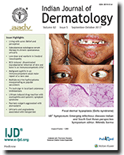
INDIAN JOURNAL OF DERMATOLOGY
Unveiling the science of skin for researchers and practitioners.INDIAN JOURNAL OF DERMATOLOGY, published by Wolters Kluwer Medknow Publications, is a renowned open-access journal that has been a significant platform for disseminating vital research in the field of dermatology since its inception in 1962. With an ISSN of 0019-5154 and an E-ISSN of 1998-3611, the journal covers a comprehensive array of topics relevant to skin health and diseases, serving both academic and clinical audiences in India and beyond. Having transitioned to an open access model in 2005, it strives to enhance the reach and impact of dermatological research. The journal is classified in the Q3 quartile within the dermatology category as of 2023 and ranks 82 out of 142 in Scopus, showcasing its contribution to the field despite competitive rankings. By fostering scholarly communication and providing a rigorous peer-review process, the INDIAN JOURNAL OF DERMATOLOGY remains a vital resource for researchers, practitioners, and students devoted to advancing the understanding and treatment of skin disorders.
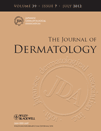
JOURNAL OF DERMATOLOGY
Pioneering insights for a healthier tomorrow.The Journal of Dermatology, published by Wiley, is a premier academic journal dedicated to advancing the field of dermatology, with its esteemed reputation reflected in its Q1 ranking in Dermatology and a remarkable Q2 ranking in Miscellaneous Medicine as of 2023. Since its inception in 1974, the journal has become a vital resource for researchers, clinicians, and students alike, covering pioneering studies and cutting-edge advancements in skin health and disease. With a Scopus rank of #32 out of 142 in the Dermatology category, placing it in the 77th percentile, the journal underscores its commitment to fostering knowledge and innovation within the dermatological community. Although the journal operates under a subscription model, it remains an essential platform for disseminating impactful research that shapes clinical practice and enhances patient care. For anyone invested in dermatological sciences, Journal of Dermatology serves as a key publication where critical insights and developments are regularly showcased.
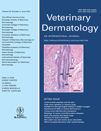
VETERINARY DERMATOLOGY
Exploring the latest breakthroughs in veterinary dermatological care.Veterinary Dermatology is a prestigious peer-reviewed journal dedicated to advancing the field of veterinary dermatology, published by Wiley. With a longstanding commitment to disseminating high-quality research since its inception in 1990, this journal has garnered significant recognition, achieving a commendable Q1 ranking in the Veterinary (miscellaneous) category for 2023 and ranking #42 out of 194 in the General Veterinary category on Scopus, placing it within the 78th percentile. Although it operates primarily on a subscription basis, the journal offers vital insights into the latest developments, clinical practices, and case studies in veterinary skin disorders. By serving as a crucial platform for researchers, veterinary professionals, and students, Veterinary Dermatology empowers its audience with the knowledge necessary to enhance animal healthcare and well-being across diverse environments. With its focus on cutting-edge research and its contribution to the global veterinary community, this journal remains an indispensable resource for those dedicated to the field.

Dermatologie
Connecting Professionals to Transform Skin HealthDermatologie, published by SPRINGER HEIDELBERG, is a prominent journal dedicated to the advancing field of dermatology. With its ISSN 2731-7005 and E-ISSN 2731-7013, this journal has established itself as a valuable resource for researchers, professionals, and students alike. Originating in Germany, the journal focuses on disseminating innovative research from 2022 to 2024, contributing significantly to the understanding of skin health and disease management. Despite its current ranking within the Q3 category in dermatology and a Scopus rank of #88/142, it provides critical insights and advances in clinical practice, epidemiology, and therapeutic modalities. With an emphasis on open discourse, it seeks to foster collaboration among healthcare professionals and researchers, thereby enhancing the quality and accessibility of dermatological research. Engage with Dermatologie to stay at the forefront of the latest advancements in skin-related health issues.
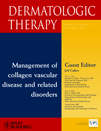
Dermatologic Therapy
Transforming skin health through cutting-edge research.Dermatologic Therapy is a leading peer-reviewed journal published by WILEY-HINDAWI that focuses on the multifaceted field of dermatology. Established in 1996 and continuing its profound impact into 2024, the journal has earned an impressive Q1 rating in Dermatology and ranks 11th out of 142 in the Scopus categorization, placing it in the 92nd percentile. With its headquarters in the United Kingdom, the journal's mission is to advance the understanding and treatment of skin diseases through the dissemination of high-quality research, reviews, and clinical information. Although not an open-access journal, it provides extensive access options to ensure that vital research reaches its audience. By leading scholarly discourse and innovation in dermatological treatments, Dermatologic Therapy serves as an essential resource for researchers, clinicians, and students dedicated to improving skin health worldwide.

JOURNAL OF DERMATOLOGICAL SCIENCE
Shaping Tomorrow's Dermatological DiscoveriesThe Journal of Dermatological Science is a premier peer-reviewed publication dedicated to advancing knowledge in the field of dermatology, biochemistry, and molecular biology. Established in 1990 and published by Elsevier Ireland Ltd, this esteemed journal has consistently achieved high academic recognition, securing a Q1 ranking in Dermatology and a Q2 ranking in both Biochemistry and Molecular Biology as of 2023. With a notable impact factor and a Scopus rank that places it within the top tier of dermatology journals globally, it serves as a critical platform for researchers, clinicians, and academicians to disseminate their findings and foster innovation in skin health and disease management. Although the journal is not open access, it provides essential insights into cutting-edge research, clinical practices, and molecular mechanisms underlying dermatological conditions. The Journal of Dermatological Science is not only a vital resource for high-quality articles but also a driving force in shaping the future landscape of dermatological research.
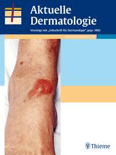
AKTUELLE DERMATOLOGIE
Pioneering Research in the World of DermatologyAKTUELLE DERMATOLOGIE is a distinguished journal in the field of Dermatology, published by GEORG THIEME VERLAG KG in Germany. With a commitment to advancing knowledge and practice in dermatological science, the journal has regularly featured research articles, reviews, and case studies since its inception in 1975 and continues to publish contributions through 2024. Despite being categorized in the lower quartile (Q4) of dermatology journals and holding a Scopus rank of #127 out of 142, it plays a pivotal role in disseminating valuable insights that support ongoing education and research in the discipline. The journal provides an essential platform for both seasoned professionals and budding researchers to share their findings, explore emerging trends, and discuss clinical practices, all while serving the needs of an evolving medical landscape. Access to its content may be restricted, but the journal remains a crucial reference for those invested in the future of dermatological research and patient care.

Actas Dermo-Sifiliograficas
Unlocking the Future of Skin Research and PracticeActas Dermo-Sifiliograficas, published by Elsevier España, stands as a pivotal resource in the realms of dermatology, histology, and pathology and forensic medicine. With its ISSN of 0001-7310 and E-ISSN 1578-2190, this esteemed journal has transitioned to an Open Access model since 2020, facilitating broader dissemination of impactful research. Operating from its Madrid headquarters, it has been a vital platform for scholarly exchange since its inception in 1945, continuing through its converged years until 2024. The journal holds a Q3 ranking in dermatology, histology, and pathology and forensic medicine as of 2023, reflecting its relevance in the academic community where it ranks 79th in dermatology and 126th in pathology among its peers. With a commitment to advancing knowledge and practice in its fields, Actas Dermo-Sifiliograficas serves as an essential repository for researchers, professionals, and students seeking to engage with the latest findings and innovative perspectives in skin and disease research.